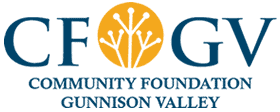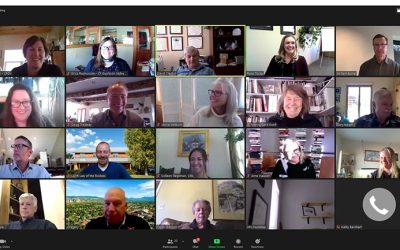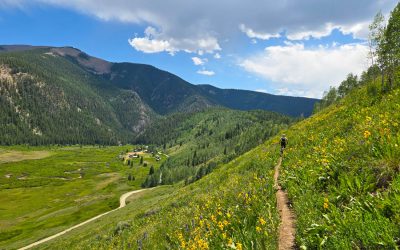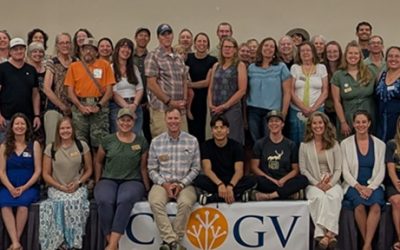An Overview of the Crisis
In March of 2022, the Gunnison Valley Community Health Coalition (of which we are a member organization) released a report called the State of the Community 2022 Report: Behavioral Health Needs and Gaps Analysis for Gunnison County. Earlier this year, we shared an overview of the report as a whole as well as a closer look at the early child education crisis and the state of mental health in the Gunnison Valley.
Given recent coverage of the impact of the fentanyl crisis in the Gunnison Times, we wanted to highlight some of the findings in the State of the Community Report related to substance use and abuse in the Gunnison Valley. Like with our other deeper dives into the individual issues we face as a community, we’ll focus on the statistics provided in the report, we’ll examine how substance abuse fits into the broader behavioral health landscape in the Gunnison Valley, and we’ll also present some efforts underway and potential opportunities to address the challenges we face.
Prevalence of Substance Use and Abuse in the Gunnison Valley
The Gunnison Times recently reported that fentanyl and “polysubstance abuse” is a growing problem in the Gunnison Valley. Other drugs including alcohol and cannabis as well as cocaine and opioids have been prevalent in the culture of the Gunnison Valley for a long time.
According to community surveys cited in the State of the Community Report, the rate of adult binge drinking in Gunnison County is 22-24% and has remained fairly steady for a long time. This is relatively in line with the state rate, falling only 2-3% higher than the state range. In contrast, the State of the Community Report cited Colorado Department of Public Health and the Environment data that indicate that Gunnison County’s adult binge drinking rate of 25.5% between 2016 and 2018 was 15% higher than Montrose County and 10% higher than Chaffee County. The State of the Community Report also looked at binge drinking rates for high-school-aged youth using the Healthy Kids Colorado Survey. The current rate of 27% increased about 8% between 2017 and 2019 and is quite a bit higher than the national and state averages, which both fall at about 14%.
In addition to widespread alcohol use, other data indicate that usage of other drugs is increasing in the Valley. Researchers cite monthly arrests for drugs (excluding alcohol and cannabis) roughly tripling between 2010 and 2021. They estimated high and low community rates for alcohol disorders and drug abuse as follows:

Broader Impact of Substance Use and Abuse in the Community
In our original overview of the State of the Community Report, we wrote that in the case of behavioral health, we can often separate the challenges into causes and symptoms of poor behavioral health. However, especially in cases of substance abuse, that’s an overly simplistic look. Substance abuse may initially be triggered by financial stress, food insecurity, or lack of housing. The State of the Community Report clearly highlights ways that it can then be a compounding issue that leads to a cascade of behavioral health problems.
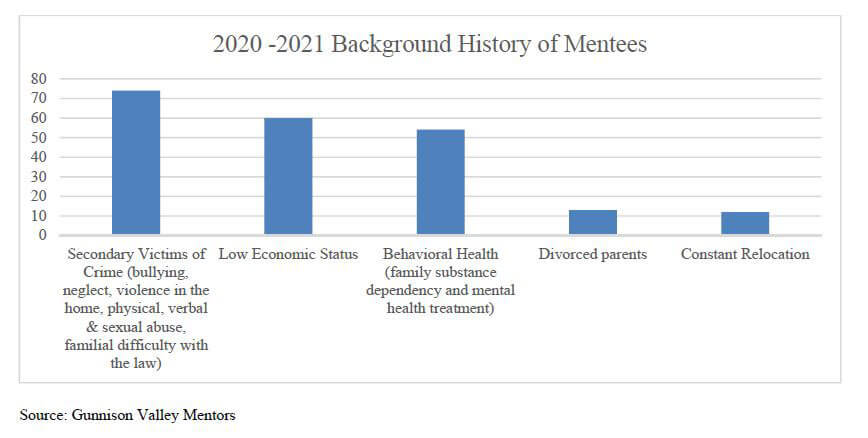
This shows up in data and anecdotes from organizations like Gunnison Valley Mentors and Project Hope. Over 50% of mentees involved in Gunnison Valley Mentors in 2020-2021 experienced difficulties related to behavioral health in their homes, including family substance dependency. According to the State of the Community Report, of the youth served by Project Hope in 2020, 26% were in a home with an adult with substance abuse concerns.
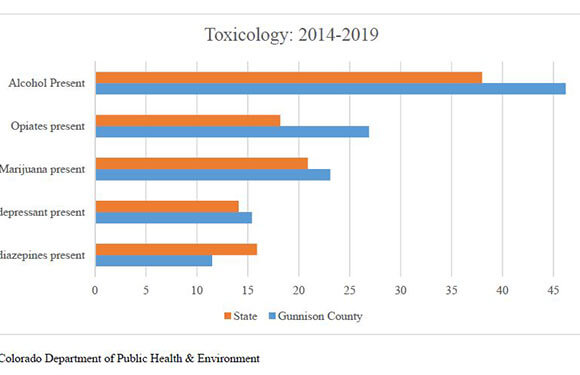
In addition, substance use and abuse is linked to both behavioral health admissions to the emergency department and suicide in the Gunnison Valley. As shown in the table above, the rate of those found with alcohol in their system after suicide was about 9 percent higher in Gunnison County than the state rate. Likewise, those found with opiates in their system after suicide was also 9 percent higher in Gunnison County than the state rate. Researchers also found that 55% of behavioral health visits to the Emergency Department locally were related to substance use and abuse.
Potential Solutions
Like with many aspects of the State of the Community Report, the scale of the problem we face in our community is alarming. There is a significant social and economic cost to our community, whether it be costs at Gunnison Valley Health, the impacts of youth binge drinking rates, or the impact of losing loved, valued community members.
Fortunately, groups and individuals across the community are hard at work in addressing this challenge. Gunnison Valley Health has made significant investments in behavioral health over the last several years, including investing in a Mobile Health Crisis Unit and additional peer support specialists. Individuals with lived experience overcoming substance abuse are reaching out to their peers and offering support on a grassroots level. Gunnison Valley Mentors and Gunnison County Substance Abuse Prevention Project have partnered to offer additional support to youth and Gunnison County Juvenile Services has partnered with the school system to offer free mental health sessions to youth. Gunnison Valley Health, the County, and the school district have partnered to provide two school-based clinicians in Gunnison and Crested Butte.
One of the biggest current challenges highlighted in the report is the lack of local treatment options. Gunnison Valley Health has started offering “Medication-Assisted Treatment” twice weekly in Gunnison with plans to expand to Crested Butte, providing one option for treatment. However, community members who do decide to seek help, resources, and treatment, often have to leave the Gunnison Valley to access treatment. Our small population makes establishing a local treatment facility cost-prohibitive, so local groups are working to develop a model that makes sense. Those who do successfully receive treatment outside of the Valley sometimes struggle when they return because we don’t have reintegration services here either. Addressing the need for local treatment and/or reintegration could potentially break the cycle of recidivism and also bring community awareness to the significance of challenges in our community.
In addition to these more institutional responses to this challenge, each of us has the opportunity to examine the ways that the culture of substance use pervades the social scene here in the Gunnison Valley. If you’re involved in event planning for a local nonprofit organization as a staff or board member, take a look at the centrality of alcohol in both planning and marketing your events and volunteer opportunities. The same free beer that may get someone to attend a volunteer event at the end of a long work day may cause someone else, someone in recovery, to stay away. As always, we encourage community members to continue to care for each other and foster a welcoming culture for everyone.
Figures and findings are summarized from the full State of the Community 2022 Report: Behavioral Health Needs and Gaps Analysis for Gunnison County.
